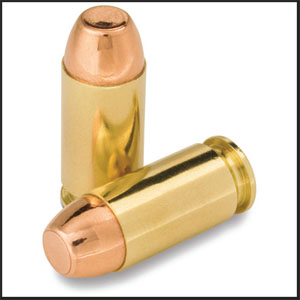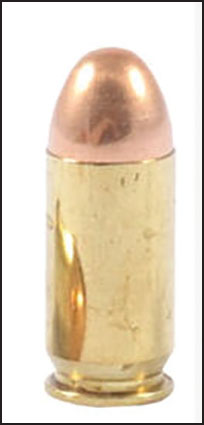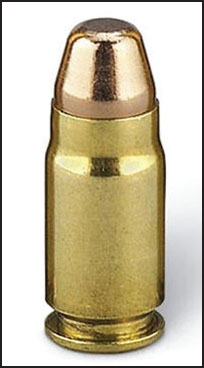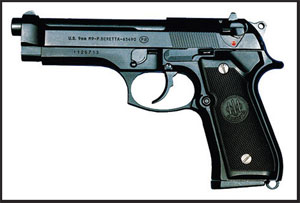by Bob Lesmeister | National Correspondent
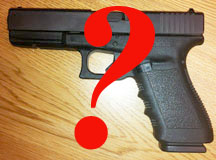 Now that the US Army is content with an amended M4 rifle in lieu of ongoing tests of the next best infantry HK P2000 weapon, it is concentrating on fulfilling a “need” for 400,000 new military handguns. The military has dubbed their ideal pistol the Modular Handgun System (MHS). The latest rumor is that the military will find a commercially viable product, as in “off the shelf” and go with it instead of spending years of competitions and suffering lawsuits from disgruntled manufacturers. No doubt the two main features of this pistol will be lethal ammo and durability. Once those features are satisfied, the next hurdle will be the manufacturer that can produce hundreds of thousands of pieces and replacement parts in a timely manner with the same quality from Gun 1 to Gun 400,000.
Now that the US Army is content with an amended M4 rifle in lieu of ongoing tests of the next best infantry HK P2000 weapon, it is concentrating on fulfilling a “need” for 400,000 new military handguns. The military has dubbed their ideal pistol the Modular Handgun System (MHS). The latest rumor is that the military will find a commercially viable product, as in “off the shelf” and go with it instead of spending years of competitions and suffering lawsuits from disgruntled manufacturers. No doubt the two main features of this pistol will be lethal ammo and durability. Once those features are satisfied, the next hurdle will be the manufacturer that can produce hundreds of thousands of pieces and replacement parts in a timely manner with the same quality from Gun 1 to Gun 400,000.
The key feature that is considered most is the actual caliber. After 30-plus years with the 9mm chambered Beretta M9, the geniuses in the Pentagon have finally come to the conclusion that the 9mm Para in combat conditions is a bit underwhelming. The calibers bandied about are still the 9mm Para, the .40 S&W, .45 ACP, and .357 Sig. The 9mm might be a dead end right from the start. The complaint about the .40 S&W is that it is powerful enough to put extra strain and stress on the slide and frame. The .45 ACP has always had a fair reputation for stopping power if not distance, but no one expects a sidearm to replace a carbine. The .357 Sig is an unlikely pick as there is not a lot of it in the commercial inventory and little if any used by special troops. If anyone at the Pentagon actually considers the .357 Sig, how about a revisit of the .41 AE?
There is a consideration that sometimes gets lost when the subject of a new military handgun is discussed. There are two segments of society that need the option of a lethal sidearm, but their needs are not necessarily mutual. Former DEA range master John Litton notes what may be an excellent choice for law enforcement may not be or cannot be the choice for military, simply based on international laws that govern warfare. Certain projectiles in a 9mm Para round can be very effective, but the military is subject to the use of full metal jacket only. Says Litton, “Personally, I like the .45 ACP. I also doubt that the .40 S&W is that much harder on the slide and frame than the .45 and .45s have lasted a very long time. But I guess the data proves me wrong. One of the reasons the FBI went with the .40 S&W was reduced recoil compared to the .45, higher magazine capacity, and more power than the 9mm. I think the main problem with the 9mm for military use is their restriction to using only FMJ ammo. In law enforcement the 147-gr. HP gets good results while the FMJ over penetrates with a lot less damage.”
Litton’s fellow former DEA tactics/firearms instructor has his own ideas on ammo and slide/frame durability. He observed, “The .40 S&W is very hard on the frame and one of the reasons the FBI is going to switch from it. The .45 ACP, when they do the wave impulse, is surprisingly easy to shoot and easier on the frame.” He said that there is a move back to the 9mm and it probably won’t be a problem because of the various lethal projectiles that can be used by law enforcement but a problem for the military. He opined that, “The weight of the .45 ACP rounds must be a concern when you can pack more 9mm rounds than .45s. This is one of the reasons Delta went with the Glock 19. But the USMC Spec Ops went with the Colt 1911 .45 ACP. Probably the best round for the military is the .357 Sig, but there again it’s a difficult round for the average shooter to handle. It has great penetration and is reliable because of the bottle neck cartridge but it’s still hard on the frame.” This former instructor might have the answer when he predicts, “The best indicator may be what the FBI does as I’m sure it has learned from its goof with the 10mm.”
There are certain criteria that one may argue the military will look for and not look for in its quest. Double-action-only pistols will probably be out of the question as any piece that does not have a manual frame-mounted safety. History has shown that Glock is reluctant to incorporate a manual safety on its models.
A feature that the military has expressed that it wants to get away from is the cut-away slide as on the Beretta M9. However, the Px4 with full slide and rotary bolt system in .45 ACP is viable as is the HK P2000. The traditional single action .45 ACP M1911 with modern upgrades may be considered but “cocked & locked” may be a show stopper. A must across-the-board, however, is a modular grip system which is easy enough for any manufacturer to incorporate.
Whatever the choice, at nearly half a million pieces it’s going to be a weapon the US military will love or tolerate for the next 20 to 30 years.

